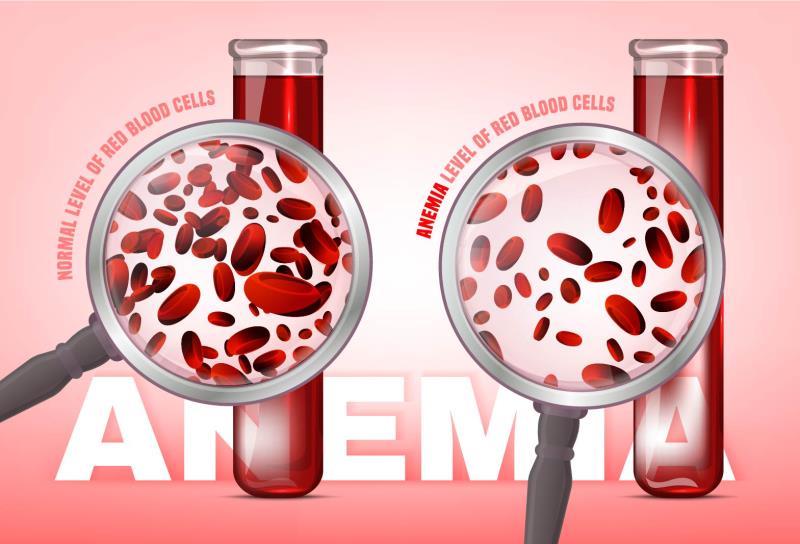
Intravenous (IV) infusion of iron isomaltoside led to a significantly reduced incidence of hypophosphatemia in patients with iron deficiency anaemia (IDA) compared with ferric carboxymaltose, according to results of two randomized clinical trials.
The two identical trials enrolled patients with IDA* (mostly women due to gynaecological bleeding) who were intolerant or unresponsive to oral iron. Participants were randomized in a 1:1 ratio to receive either iron isomaltoside 1,000 mg at day 0 (n=62) or ferric carboxymaltose 750 mg at days 0 and 7 (n=61) in trial A (mean age 45.1 years) and trial B (mean age 42.6 years, n=61 in each group). Patients were followed up until day 35. [JAMA 2020;323:432-443]
At any time from baseline to day 35, iron isomaltoside recipients had a consistently lower incidence of hypophosphatemia** compared with ferric carboxymaltose recipients in trial A (7.9 percent vs 75.0 percent; p<0.001) and trial B (8.1 percent vs 73.7 percent; p<0.001).
In a post hoc analysis, 11.3 percent of the patients in the ferric carboxymaltose group had severe hypophosphatemia (serum phosphate ≤1.0 mg/dL), compared with none in the iron isomaltoside group.
The findings were consistent with a previous study which revealed that ferric carboxymaltose causes high rates of hypophosphatemia, the researchers noted. [JCI Insight 2018;3:e124486]
In the present study, ferric carboxymaltose recipients showed a higher prevalence of hypophosphatemia that peaked at day 14 (pooled data, 65.1 percent vs 3.4 percent; p<0.001) and remained significantly higher at day 35 (pooled data, 43.0 percent vs 0.9 percent; p<0.001).
The most common adverse drug reactions reported in the iron isomaltoside and ferric carboxymaltose treatment groups were headache (3.2 percent vs 4.3 percent) and nausea (0.6 percent vs 6.8 percent).
Overall, adverse drug reactions occurred at a higher rate in the ferric carboxymaltose than the iron isomaltoside group in both trial A (45.0 percent vs 11.1 percent) and trial B (49.1 percent vs 22.6 percent).
“IDA is a global health problem. Iron isomaltoside 1000 (now known as ferric derisomaltose) and ferric carboxymaltose are IV iron formulations that were developed to rapidly correct IDA, especially in patients who do not tolerate or fail to respond to oral iron,” said the researchers.
Both trials showed that treatment with iron isomaltoside resulted in a significantly lower incidence of hypophosphatemia compared with ferric carboxymaltose, in those who did not respond to or tolerate oral iron, the researchers said. “However, further research is needed to determine the clinical importance of [these findings],” they added.
*IDA: Defined as haemoglobin level of ≤11 g/dL and serum ferritin level of ≤100 ng/mL
**Hypophosphatemia: Defined as serum phosphate level of <2.0 mg/dL